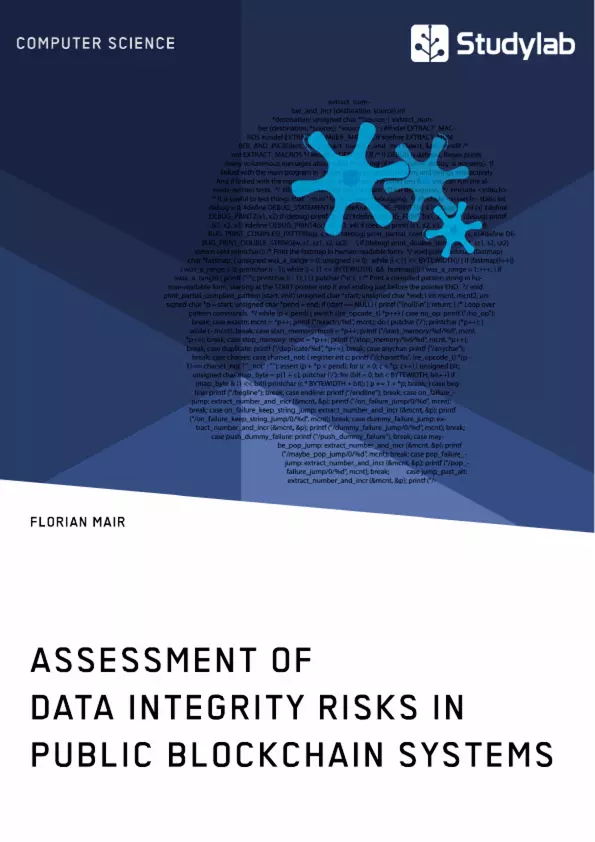Since its first use in 2008, blockchain technology has come a long way. It has developed to distributed virtual machines that execute smart contracts and much more. Blockchains have a potential application in many industries and offer great innovation potential for organizations.
With all the opportunities and value new technologies can deliver, the risks are often neglected. This is why in this book, Florian Mair identifies risks to data integrity on blockchains. Further he assesses the differences regarding data integrity among private and public blockchains.
Mair has found overall 11 risks which are applicable to public blockchains. But even though some of them got rated as a high risk there is currently no evidence that a blockchain should be considered insecure. The author discusses some actions that can be taken to mitigate the identified risks.
In this book:
- data security;
- risk management;
- bitcoin;
- risk assessment;
- Distributed Ledger Technology
Inhaltsverzeichnis (Table of Contents)
- 1 Introduction
- 1.1 Research Gap and Research Question
- 1.2 Motivation
- 1.3 Value Proposition
- 1.4 Outline
- 2 Background
- 2.1 Centralized, Decentralized & Distributed Systems
- 2.2 Blockchain Technology
- 2.3 Data Security
- 2.4 IT Risk Management
- 2.5 Previous research
- 3 Qualitative Research Methodology
- 3.1 Data Collection Method
- 3.2 Focus Interview
- 3.3 Ontology & Epistemology
- 3.4 Content Analysis
- 3.5 Data Presentation
- 3.6 Scientific Quality Criteria
Zielsetzung und Themenschwerpunkte (Objectives and Key Themes)
This paper aims to identify and assess the risks to data integrity on public blockchains. It investigates the differences between public and private blockchains regarding data integrity through a qualitative research approach, utilizing focus interviews and a quantitative online survey. The findings are used to evaluate the likelihood of occurrence and possible consequences of identified risks on data integrity.
- Data integrity risks in public blockchains
- Comparison of data integrity in public and private blockchains
- Evaluation of risk likelihood and consequences
- Mitigating identified risks
- Decision support for selecting between public and private blockchains
Zusammenfassung der Kapitel (Chapter Summaries)
- Chapter 1: This chapter introduces the research gap and research question, outlining the motivation behind the study and its value proposition. It also provides a brief outline of the subsequent chapters.
- Chapter 2: This chapter delves into the background of the research, exploring concepts like centralized, decentralized, and distributed systems, blockchain technology, data security, IT risk management, and previous research on the topic.
- Chapter 3: This chapter focuses on the qualitative research methodology employed in the study. It details the data collection method, focus interview approach, ontological and epistemological considerations, content analysis techniques, data presentation methods, and scientific quality criteria.
Schlüsselwörter (Keywords)
This research focuses on the security of public blockchain systems, specifically the risks to data integrity. The key terms and concepts include: public blockchains, private blockchains, data integrity, risk identification, risk assessment, qualitative research, focus interviews, online survey, risk mitigation strategies.
- Quote paper
- Florian Mair (Author), 2019, Assessment of Data Integrity Risks in Public Blockchain Systems, Munich, GRIN Verlag, https://www.grin.com/document/453191



